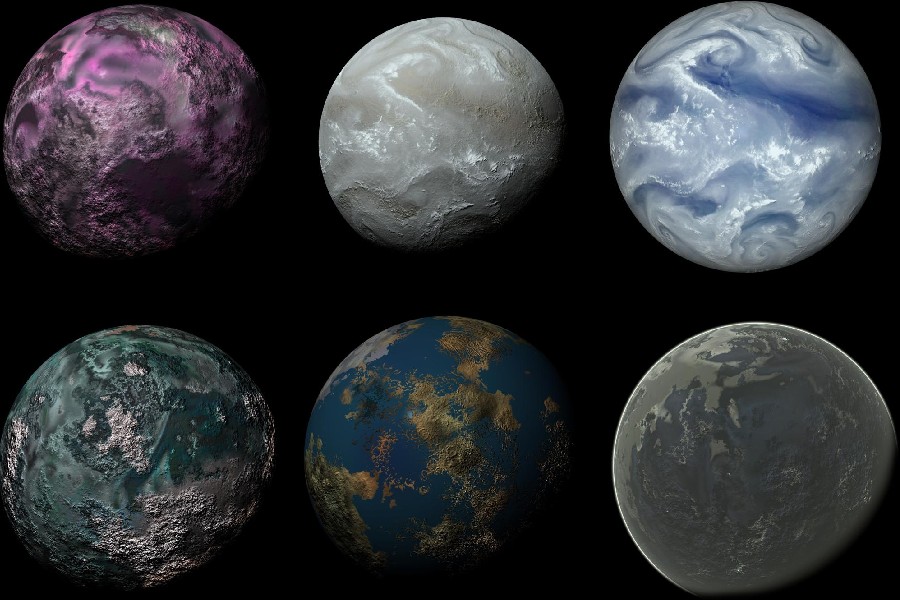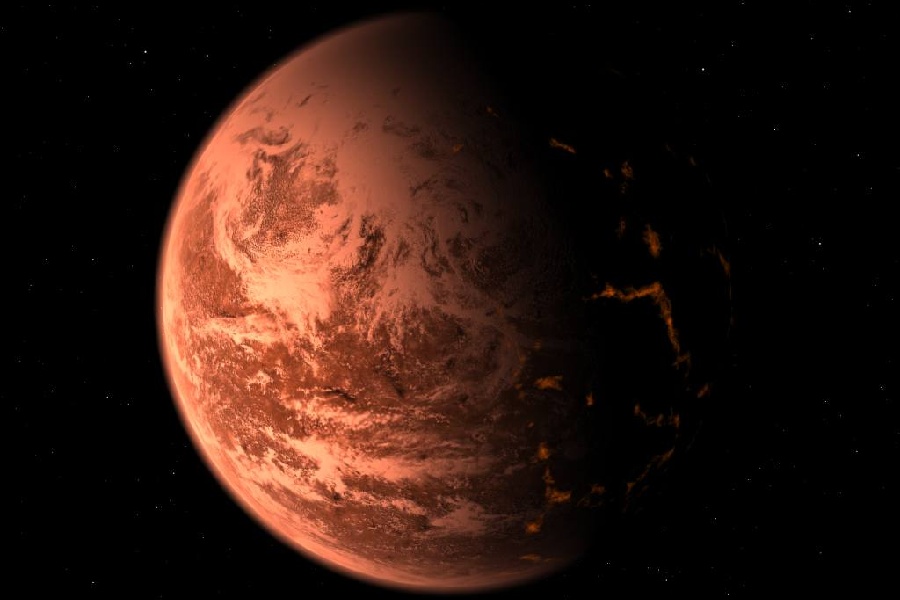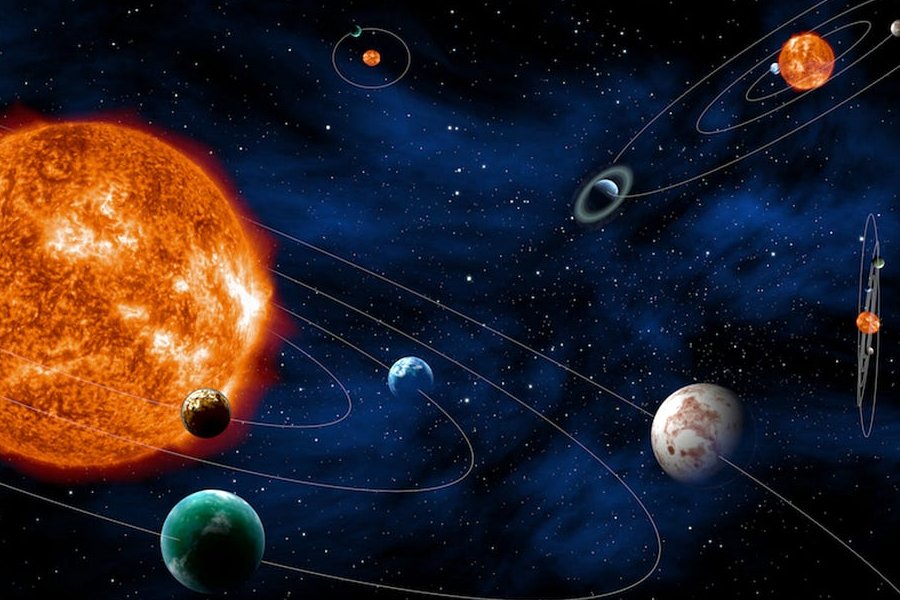Many alien worlds discovered in recent decades resemble our home planet. As this groundbreaking field steadily matures, discoveries of exoplanets like Earth become increasingly feasible. This brings us to the cusp of answering that most tantalizing question – could life exist elsewhere?
So, we will explore the prospects and challenges of identifying potentially habitable exoplanets resembling our Pale Blue Dot. Beginning with an overview of Earth’s characteristics that support life as we know it, we provide context on what makes our planet habitable.
We will also examine astronomers’ promising methods to detect Earth-sized worlds in other solar systems. Delving into a few of the most Earth-like exoplanets highlights how difficult confirming true Earth twins remains with current technology.
Exoplanets Like Earth
Earth-like planets, and potential habitats for life, are a focus of astronomy. Around one in five Sun-like stars may host Earth-sized planets in habitable zones—suggesting 11 to 40 billion such planets in the Milky Way.
Hence, NASA’s Kepler mission identified notable candidates such as Kepler-186f, Kepler-442b, and Kepler-62f. However, ongoing research and advancements are needed. For example, the James Webb Space Telescope aims to reveal more about these exoplanets.

What Makes Earth Special?
Unique characteristics of Earth
Earth, our home in the vast cosmos, possesses many distinctive features that make it an extraordinary celestial body. Earth stands out in the solar system, from its life-sustaining atmosphere to its diverse ecosystems. So, the key characteristics include:
- Rich atmosphere – Earth boasts a life-enabling atmosphere primarily composed of nitrogen and oxygen, fostering the conditions necessary for life as we know it.
- Moderate climate – The planet’s moderate climate, driven by a stable axial tilt, supports various environments, from polar ice caps to tropical rainforests.
- Liquid water – A crucial ingredient for life, distinguishes Earth. Oceans, rivers, and lakes cover approximately 71% of its surface.
- Dynamic geology – Earth’s dynamic geology, with tectonic activity and a magnetic field, contributes to a constantly changing surface and protects it from harmful solar radiation.
Criteria for identifying Earth-like exoplanets
The search for exoplanets akin to Earth involves meticulous evaluation of various criteria to determine their potential habitability. Scientists look for planets that meet specific conditions, such as:
Habitable zone
The habitable zone, also known as the Goldilocks zone, is the orbital region around a star where conditions are favorable for liquid water to exist on a planet’s surface. This zone ensures temperatures are neither too hot nor too cold, increasing the likelihood of supporting life.
Size and composition
Earth-like exoplanets are often similar to Earth, which influences gravity and atmospheric retention. Also, a rocky composition similar to Earth’s is crucial. This indicates the potential for solid surfaces and geological processes.
Hence, understanding these criteria guides astronomers in pinpointing exoplanets that share fundamental characteristics with our home planet. As technology advances, the search for Earth-like worlds in the cosmos becomes more refined and promising.
Notable Exoplanet Discoveries
Kepler-186f: Earth’s cousin
Situated in the constellation Cygnus, Kepler-186f is a notable celestial jewel. It is one of the first Earth-sized exoplanets discovered within its star’s habitable zone.
Key features
- Size and composition – Similar in size to Earth, Kepler-186f is a rocky exoplanet, suggesting the potential for a solid surface.
- Orbital characteristics – It orbits its host star, Kepler-186, at a distance that allows for the possibility of liquid water, a fundamental requirement for life.
Significance
Kepler-186f sparked enthusiasm among scientists and the public due to its Earth-like attributes. This makes it a prime candidate for further study in the search for extraterrestrial life.
Proxima Centauri b: The closest exoplanet to Earth
In the Centauri star system, a mere 4.24 light-years away, Proxima Centauri b is the closest known exoplanet to Earth. At 1.17 times Earth’s size, Proxima b likely harbors a rocky composition amenable to supporting life.
Fierce stellar flaring could blast Proxima b too vigorously for life in surface water or air. Yet sheltered subterranean habitats may open pathways for liquid water shelter from relentless solar bombardment.
Key features
- Proximity to host star – Proxima Centauri b orbits its host star, Proxima Centauri, in the habitable zone, although the star is a red dwarf with unique characteristics.
- Potential for liquid water – The planet’s orbit provides conditions where the existence of liquid water is plausible, a tempting prospect for habitability.
Significance
Its status as the closest known exoplanet to Earth, at just 4.24 light-years away, makes it a prime target for future interstellar exploration. Its proximity facilitates detailed observations, offering a unique opportunity to study an exoplanet within our cosmic neighborhood.
TRAPPIST-1 System: A cluster of potentially habitable planets
The TRAPPIST-1 system, a mere 39 light-years away in the Aquarius constellation, captured global attention. It boasts a unique arrangement of seven Earth-sized planets orbiting a red dwarf star.
Key features
- Seven-planet lineup – The TRAPPIST-1 system is home to seven planets, with at least three situated within the habitable zone.
- Compact orbital periods: The planets’ proximity to their host star results in short orbital periods, opening up intriguing possibilities for the study of their atmospheres.
Significance
The discovery of the TRAPPIST-1 system is significant. It presents a rare opportunity to investigate seven Earth-sized planets orbiting a single star, offering insights into the diversity of planetary systems.
So, it has the potential for exploring possible habitability outside our solar system since it contains at least three planets in the habitable zone where liquid water might exist.

Gliese 876 d: A Super-Earth with changes in seasons
Among the menagerie of exoplanets circling the modest red dwarf Gliese 876 lies a world of extremes. Gliese 876 d earns designation as a Super-Earth with over seven times the mass of our home planet.
With its parent star emitting only 1.2% of the radiance of our Sun, Gliese 876 d still receives Earth-like warmth from the tight orbit. So close that it circles the ruddy sun in under two months.
Key features
- Mass and density – As a Super-Earth, Gliese 876 d contains significantly higher mass and density than Earth, perhaps with a thick atmosphere.
- Exotic seasons – With an orbital period of around two months, seasons on Gliese 876 d would pass faster than Earth experiences.
Significance
Gliese 876 d is quite different from Earth. It has incredible gravity and experiences seasons much faster. However, some traits make it an exciting find in the search for exoplanets like Earth. Gliese’s star is dim and small, like stars that could host habitable worlds.
Kepler-1649 c: An Earth-sized world in a habitable zone
Hidden in Kepler telescope data lay Kepler-1649 c – an Earth-sized world receiving similar stellar radiation as Earth. This tantalizes with possibilities for liquid surface water.
At only 1.06 times the size of Earth, Kepler-1649 c may constitute one of our cosmic neighbor’s closest analogs in terms of mass and rocky composition. Additionally, it is positioned around a dim, long-lived red dwarf star.
Key features
- Size – With 99% of Earth’s diameter, Kepler-1649 c falls into classifications as an Earth-sized exoplanet.
- Habitability – Orbiting at just the right distance from its host star, surface conditions could allow liquid water to exist.
Significance
The discovery of Kepler-1649 c made history as the most Earth-like habitable zone exoplanet ever found by the Kepler mission. Like Earth, this planet orbits just the right distance to allow liquid surface water.
With 99% of Earth’s diameter and orbiting in its star’s habitable zone, Kepler-1649 c suggests terrestrial-sized planets with life-allowing orbits exist elsewhere. It demonstrates that terrestrial planets can exist in life-supporting orbits around other stars.
Techniques for Detecting Exoplanets
Transit method
The transit method involves observing a star for periodic dips in brightness, indicating a planet passing in front of it. Scientists can deduce the planet’s size and orbit by measuring the decrease in luminosity. This technique has been crucial in discovering numerous exoplanets, including those in the habitable zone.
Radial velocity method
The radial velocity method detects exoplanets by measuring variations in a star’s spectrum caused by the gravitational pull of an orbiting planet. These shifts in the star’s radial velocity indicate the presence of an unseen companion. This method has been instrumental in identifying massive planets and understanding their orbital characteristics.
Direct imaging
Direct imaging involves capturing actual pictures of exoplanets. It is challenging due to the vast brightness difference between stars and their orbiting planets.
It is often employed for large, young planets that emit their light. Hence, technological advancements, such as adaptive optics, have enhanced our ability to directly image exoplanets.
Microlensing
Microlensing utilizes the gravitational lensing effect. When a massive object, like a star, passes in front of a background star, it magnifies and brightens the background star’s light.
However, if a planet orbits the foreground star, it can briefly enhance this effect. So, microlensing is particularly useful for detecting distant or faint exoplanets.
Astrometry
The astrometry technique involves measuring the precise position of a star over an extended period. A subtle wobble in the star’s position may indicate the presence of an orbiting planet.
Moreover, astrometry is effective for detecting massive planets with long orbital periods. It also complements other methods in confirming the existence and characteristics of exoplanets.

Challenges in Identifying Earth-Like Exoplanets
Technological limitations
The quest for Earth-like exoplanets faces formidable technological limitations. Existing telescopes, while powerful, often struggle to detect small, Earth-sized planets at vast distances.
Therefore, advancements in telescope technology and observational techniques are essential. They help overcome these limitations and enhance our ability to identify and study distant exoplanets accurately.
Atmospheric composition analysis
Atmospheric composition analysis poses a significant challenge in characterizing exoplanets. Studying the atmospheres of distant worlds requires advanced instruments capable of discerning chemical signatures.
So, spectroscopy plays a crucial role. Deciphering subtle atmospheric components amidst the overwhelming brightness of host stars demands cutting-edge technology and innovative analytical methods.
False positives and negatives
The issue of false positives and negatives complicates exoplanet identification. Signals that resemble planetary transits may sometimes result from stellar activity, instrumental artifacts, or other astrophysical phenomena, leading to false positives.
Conversely, genuine exoplanet signals might be overlooked, contributing to false negatives. Developing rigorous data validation methods and refining detection algorithms are crucial. This will minimize these errors and ensure the accuracy of exoplanet discoveries.
The Search for Extraterrestrial Life
Conditions for life on exoplanets
Determining if exoplanets could support life requires insight into environmental qualities that sustain life on Earth. Liquid water, various nutrient sources, and complex chemical cycles contribute to habitability.
Researchers model the potential for exotic exoplanets to possess the chemistry and conditions for life as we know it. However, an enduring question is whether environments dramatically distinct from Earth could still give rise to life in ways we fail to anticipate.
Detecting biosignatures
One route to uncover extraterrestrial life involves scanning exoplanet atmospheres for “biosignatures” – gases potentially indicative of biology at work.
Oxygen, methane, and ozone raised to substantial abundances could flag biological processes, though these alone may not confirm life definitively. Next-generation space telescopes will enable more detailed spectral analysis of exoplanetary atmospheres.
They also help rule out false-positive biosignature gases generated through non-biological geophysical processes. So, discerning true extraterrestrial life requires identifying and confirming unambiguously biological atmospheric byproducts.
SETI Projects
The Search for Extraterrestrial Intelligence (SETI) encompasses various efforts to detect intelligent alien life through technological signals. Most projects use radio telescopes scanning wide swaths of the sky for narrow-band emissions that could indicate alien TV, radio or radar technologies.
Other SETI initiatives have searched for laser pulses and polluting emissions from industry. Some have even sought signs of extraterrestrial spacecraft visiting our solar system.
Moreover, expanding radio efforts, such as the new LGM-1 telescope array, aim to leverage advancing computing techniques. These efforts seek to uncover faint or fleeting signals heralding minds beyond Earth as part of initiatives like the Breakthrough Listen project.

Future Prospects in Exoplanetary Science
Ongoing and planned missions
The future of exoplanetary science is promising, with a lineup of ongoing and planned missions set to expand our understanding of distant worlds. Missions like the Transiting Exoplanet Survey Satellite (TESS) continue to scan the sky, identifying new exoplanets and providing valuable data on their characteristics.
Anticipated future missions, such as the European Space Agency’s PLATO (PLAnetary Transits and Oscillations of stars) mission and NASA’s James Webb Space Telescope follow-up missions, are poised to delve deeper into the atmospheres and compositions of exoplanets. These missions aim to unravel more mysteries of our cosmic neighbors.
Advancements in space telescope technology
Advancements in space telescope technology are at the forefront of exoplanetary research. While the James Webb Space Telescope has already launched, its revolutionary capabilities are expected to redefine our understanding of exoplanets.
Future developments may involve even more advanced space-based telescopes equipped with cutting-edge instruments for detailed characterization. This includes the potential for directly imaging smaller, Earth-sized exoplanets and analyzing their atmospheres.
Ground-based observatories are also undergoing upgrades. This contributes to a comprehensive approach to studying exoplanets across different wavelengths.
Collaborative efforts in exoplanet research
The cooperative nature of exoplanet research is evident in collaborative efforts among international space agencies, research institutions, and astronomers. Plus, joint missions, data-sharing initiatives, and collaborative analysis efforts enhance the collective ability to tackle the complex challenges of exoplanetary science.
Furthermore, platforms like the Virtual Observatory provide a centralized hub for researchers globally to access and analyze data. This fosters a collaborative environment that accelerates discoveries and ensures a more comprehensive understanding of exoplanetary systems.
As these prospects unfold, the connection between ongoing missions, technological advancements, and collaborative endeavors is poised to revolutionize our knowledge of exoplanets.
Such synchronized breakthroughs promise to enhance our capacity for discovering potentially habitable exoplanets. They could also help answer profound questions about the potential for extraterrestrial life existing within the vast expanse of the universe.
Frequently Asked Questions
What exoplanet is most like Earth?
Kepler-452b is often considered one of the most Earth-like exoplanets discovered. Located 1,400 light-years away in the constellation Cygnus, Kepler-452b is a rocky planet close to Earth’s size that orbits in its star’s habitable zone. However, significant differences likely exist between Kepler-452b and Earth.
Can humans live on Kepler-452b?
While Kepler-452b orbits in its star’s habitable zone, it is unknown whether humans could live on the exoplanet’s surface. Major barriers exist, like its distance from Earth, potential environmental factors, and unknown atmospheric composition or surface conditions. More advanced probes are needed to determine true habitability for humans.
How many habitable exoplanets are there?
Astronomers estimate the Milky Way galaxy likely contains billions of potentially habitable exoplanets based on data from NASA’s Kepler space telescope and planet formation models.
However, only a tiny fraction have been detected and studied so far. Substantial technological advances are needed to determine the number of habitable exoplanets in the galaxy.
Conclusion
The prospect of finding exoplanets like Earth touches that deepest chord of human curiosity: Are we alone? Recent decades have unveiled staggering exoplanet diversity and rocky worlds strikingly similar to humanity’s home.
However, unveiling true Earth twins remains challenging. Rapid technological gains such as larger telescopes and techniques to analyze atmospheres for potential biosignatures bring that vision closer to reality.
In every study probing the habitability of exoplanets like Kepler-186f or the intriguing TRAPPIST-1 system, we glimpse more answers about environmental factors conducive to alien life. We hope this glimpse across the cosmos has illuminated some promising pathways toward definitively determining if life exists elsewhere in the universe.
